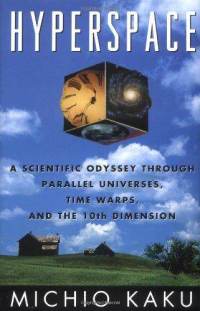I'm going to say it right now. The next disruptive advance in movies is VRM. Virtual Reality Movies. We're at a time where VR technology has finally caught up with the idea. The only question is, can the media creators keep up with the technology?
UPDATE: 1/4/2015
Here are a couple of links that show the technology for this shift is quickly approaching.
The first made-for-VR movie, and the
VR video camera.
The Frame
Media creation hinges upon "the frame." It's a limitation imposed by the medium itself. It's what you see through in TV, movie screens, monitors, smartphones, photos and paintings. These all have a frame that becomes your window into fantasy. If you were to look a few feet away from what the frame shows in movies and TV, you'd see half-finished walls, green screens, actors and crew sitting around in an area that is completely alien to the content you've had framed for you. The frame is a safe, limited viewpoint that allows imaginary worlds to be created
very cheaply. What happens when you remove that artificial frame?
Frameless Media
Google Cardboard and the
Oculus Rift brings the opportunity to remove the frame entirely. The new frame becomes your own eyes. A 360° horizon, everything you see when looking around you. The potential is great. For example, you're watching a murder mystery movie and you could look around at clues and people as if you were in the scene. What if you were in a Lord of the Rings movie walking along mountain vistas and were able to look anywhere around you?
Problems, or Opportunities?
 |
| 360° view in a single frame |
Without the frame, movie production gets expensive. The expense of replacing narrow stage slices with scenery and action for entire 360° areas adds up quickly. Then we must consider the story and actors. How do you position actors and action in a way that ensures story delivery is relevant no matter where the viewer is looking? With the ability to look around as if you were there, is a new genre created where you are a silent participant in the scene? Do actors act toward you, as if you were in the scene? Z-axis blocking becomes a thing of the past. The new technique is central axis blocking, where instead of filming for a single direction, you have more than 6 to contend with (including above and below). There are several existing solutions to these questions, and many more to be found. I'm very excited to see the different ways these will be handled by imaginative directors.
Interaction
Come to think of it, if we're essentially in the scene with the ability to look around us, why stop there? Why not create stories in the style of
Choose Your Own Adventure books, where you make a few key decisions, then watch the story unfold before you. This adds return viewers, as people will want to see how the VRM plays out with different decisions. But wait...don't we do this already?
Game Frame
 |
| Not the future of VRM |
When you add interaction to a movie, it essentially becomes a video game. Games are the primary platform for VR tech, and they've been handling the frameless movie for a couple of decades now,
with interactivity. The primary differences between movies and games is interaction, and the believability of scenes. Games have a decades-long jump on movies in interactivity. Movies have an advantage over video games in big budgets and reality of scenery and acting.
VRM games will surpass VRM theatres in the immersion factor. Anything shot in film (or pre-rendered) has limited immersive capability, whereas a world of digital scenery and digital actors will have unlimited immersion potential. The believability gap between games and movies is quickly closing, allowing games to create highly believable, and 100% responsive environments at the same time.
How Will It Happen?
 |
| A bit closer to the final destination |
VRM will still be disruptive to movies, but it won't happen in theatres. It will happen in your home. VRM will become an outgrowth of video games. A subgenre. From an interactivity standpoint, VRM in a movie theatre would be like playing
Dragon's Lair on the old arcade, whereas playing it on your game console would be like playing
Dragon Age to the nth degree. When VR devices quickly become as ubiquitous as the Wii remote or Kinect, it will empower game companies to release media more as interactive films. Some games have already taken this turn by releasing games such as Final Fantasy XIII that are essentially movies with only a bare minimum of interaction.
Budgetary constraints, technology, convenience, interaction demand, and personal comfort factors will prevent widespread success of VRM from theatres. Over time, movie theatres will become like gigantic record players of an age gone by. With any luck, entrepreneurs will turn those defunct movie/VRM houses into live stage performance venues updated with the latest performance advances (light projection, stage drone actors, audience voting, etc.).
Antisocial Media
"It's time that we learn to examine the humanity in any technology we create or use."
As a final note, movies are a social medium. We rarely attend alone, and we revel in sharing the experience with others. They're an excuse to go outside and be with the people we care about, and an excuse to be with people we've only just met. Socially, movie theatres are a huge success. They enrich our lives by connecting us in close proximity with other people in a shared experience.
In a VRM theatre, we are disconnected from those who go with us. Everyone has their own separate view, no longer sharing the same experience. Most likely, we'll use this media alone in our homes instead of going out with friends and family, opting to be "social" by playing online in separate homes across the country with people we may or may not have ever met. Will this be yet another physically disconnecting experience in space and attention?
We should not ignore the social effects of our media and just "let it play out," knowing most creators/publishers truly only care about taking your money. It's time that we learn to examine the humanity in any technology we create or use. It's time to be thoughtful, and teach responsibility in both usage and creation. As creators, take some time to examine the social effects of VRM, and plan its use responsibly, socially. I'm not talking about the half-social experience of current social media. I'm talking about ways to get people in physical spaces together, sharing experiences. Let's engineer the genre so that it becomes less of a separation medium, and more of a medium that can bring us together.
I'm excited to see what VRM will bring us, and how it ultimately turns out. Do you have any comments on the idea?







 Michio Kaku is one of my first major influences, my physics rock star. He wrote
Michio Kaku is one of my first major influences, my physics rock star. He wrote 










